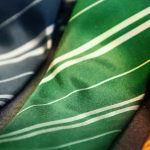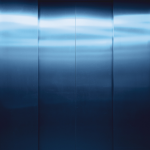The snow-white hydrangeas will turn blue and fly into a million pieces, in a miraculous yet predictable process—almost science, but not what you’d think.
Through the thin lace of the kitchen curtain, I watch them—three-foot shrubs, planted by my mother, encroaching on the backyard. Nearby, two brown rabbits lounge, chewing dandelions, sucking juices from flower-stalk straws.
My mother, a gardener, meant well; but the only person I think of, when I spy those damn hydrangeas, is my sister-in-law—blue hydrangeas decorating the wedding, the day she took my only brother away. She grew up in a family that cut itself off from relatives, and I guess that tradition was her “something borrowed.”
Don’t bring a loving family to a broken one. It’s like bringing a knife to a gun fight. None of us ever saw him again—and I hear that I’m an aunt.
*
In May, the lacecap flowerheads of the hydrangeas came in yellowish green, unfolding from their stems. In June, petals unfurled and rinsed in hard spring rains. The corymbs were brighter white than I could’ve dreamed—
Clusters of blossoms as big as white rabbits—baby rabbits, at least—newly washed, dried and cuddled, on sturdy green stems.
Or snowballs from hell.
Or polar-bear fists, clawing at my heart through my eyes.
*
My mother visits, sipping tea in the kitchen while I glare out the window at the hydrangeas.
Foolishly, I express relief. “At least the hydrangeas aren’t blue.”
That’s when she mentions that, when she planted the unwelcome visitors, she dumped a bag of pine needles at the roots—to make the soil acidic. In time, the hydrangeas will turn blue.
Mother-effing blue.
Most hydrangeas stay white; a few in friendly, alkaline soil turn rose-pink. Only hydrangeas sprung from acid grow blue. How like my sister-in-law: a blue-countenanced perversion; the sad, visible result of an acid home.
My sister-in-law—adding acid, where I did not need any more color in my life.
My mother—always trying to fix things that do not need fixing, with pine needles or pleas.
I don’t want to hurt my mother’s feelings, or cut down her hope, so I will wait until after she dies. Then, I will go into the yard with this kitchen knife, and cut them from my sight, in a splatter of petals and weeping green stems—
and the real rabbits, brown-grey and blending with the earth, not stuck on green stems like party favors—
(and not effing acid-blue)
will enjoy a delicious meal.
…
Biography
Anna Kander is a writer in the Midwest. Her work has appeared in Gone Lawn, Leveler, Gnarled Oak, Hollow Tongue, Train, and other journals. Find her at annakander.com.
…
Image: Annie Spratt





